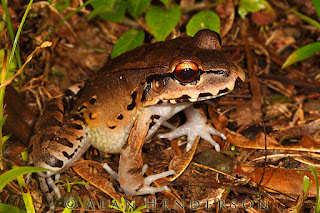After four days travelling from our home in Kuranda, we have finally arrived at our destination at Dos Brazos in Costa Rica Corcovado National Park
During the daylight hours an incredible diversity of birdlife is visible from the front porch including Toucans, and Scarlet Macaws, and array of smaller species such as Rufous-tailed Hummingbirds, Gray-capped Flycatchers and Passerini’s Tanager frequent the garden plants.
Our first nocturnal foray into the field, which was literally just around the house and grounds, unveiled a great deal of wildlife. Five species of amphibians, anole lizards, five species of katydids, and several species of spiders. In a twist for us Queenslanders, Cane Toads are native here. They are a natural part of the ecosystem and don’t have the significant impacts on other species as they do as an introduced species within Australia
Here’s a few snaps from the first night around the property we are staying on. We have yet to get ourselves a good selections of field guides, so we cannot identify many of the species we encounter as yet – particularly the invertebrates.
 |
The lids of Agalychnis spurelli are very similar to that of the Australian Lacelid (Nictymistes dayi). |
 |
Mudpuddle Frog, Physalaemus pustulosus |
 |
| Masked Tree Frog (Smilisca phaeota) |
 |
Green spider – looks very much like a Sparassid. |
 |
| Cupiennius coccineus, a wandering spider belonging to the family Ctenidae |
 |
One of many species of katydids, this one was feeding on flowers. |



I am basically wetting myself with excitement. You guys are just the luckiest people in the world right now :D
ReplyDeleteThe photos are amazing, glad to see you have settled in and are already exploring!
ReplyDeleteWonderful, as always. Enjoying every photo and every word.
ReplyDeleteDear Hendersons
ReplyDeleteYou're into it. And it just gets better. Remember I told you so.
That colourful grasshopper is one of many eumastacids. The same family as our Morabines and Biroella.
Have fun.
D